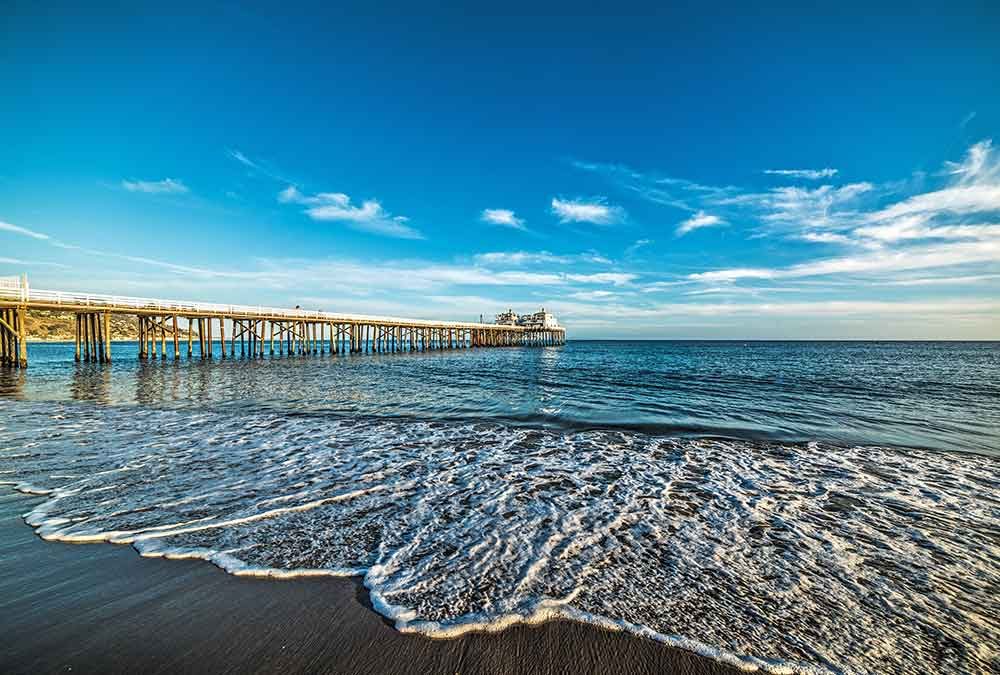A pier is a platform extending from a shore over water and supported by piles or pillars, used to secure, protect, and provide access to ships or boats. Piers attract thousands of beach goers each year to take walks, fish, and even enjoy fine dining overlooking the water. (see Images 1 and 2)
A jetty is structure, such as a pier, that projects into a body of water to influence the current or tide or to protect a harbor or shoreline from storms or erosion; a wharf. Jetties are used to protect houses and harbors, slow the process of sandy beach erosion, and also commonly used by walkers and fishermen. (see Images 3 and 4)Las Brisas Jetty
There are no piers or jetties along Zuma beach in Malibu.
What hazards do piers and jetties present?
These structures present significant hazards to beach goers because they extend from the beach into the surf zone, affecting the waves, currents, ocean bottom, and by allowing people to get into situations where they can be swept off or into the structure by strong ocean conditions.
How do I avoid being injured by a pier or jetty?
Always keep a distance of at least 500 feet when swimming, wading, or surfing in the proximity of a pier or jetty. You should keep track of where you enter the water and not allow yourself to be swept down the beach. Pick a landmark on the beach or in the background and stay in front of it. Staying close to shore where you can firmly stand on the bottom will make it easier to stay in one place. If you are unable to resist against the current, exit the water and walk back to where you entered before you get into a situation you cannot correct.
Source:
The American Heritage® Dictionary of the English Language, Fourth Edition. Copyright © 2000 by Houghton Mifflin Company. Published by Houghton Mifflin Company. All rights reserved
